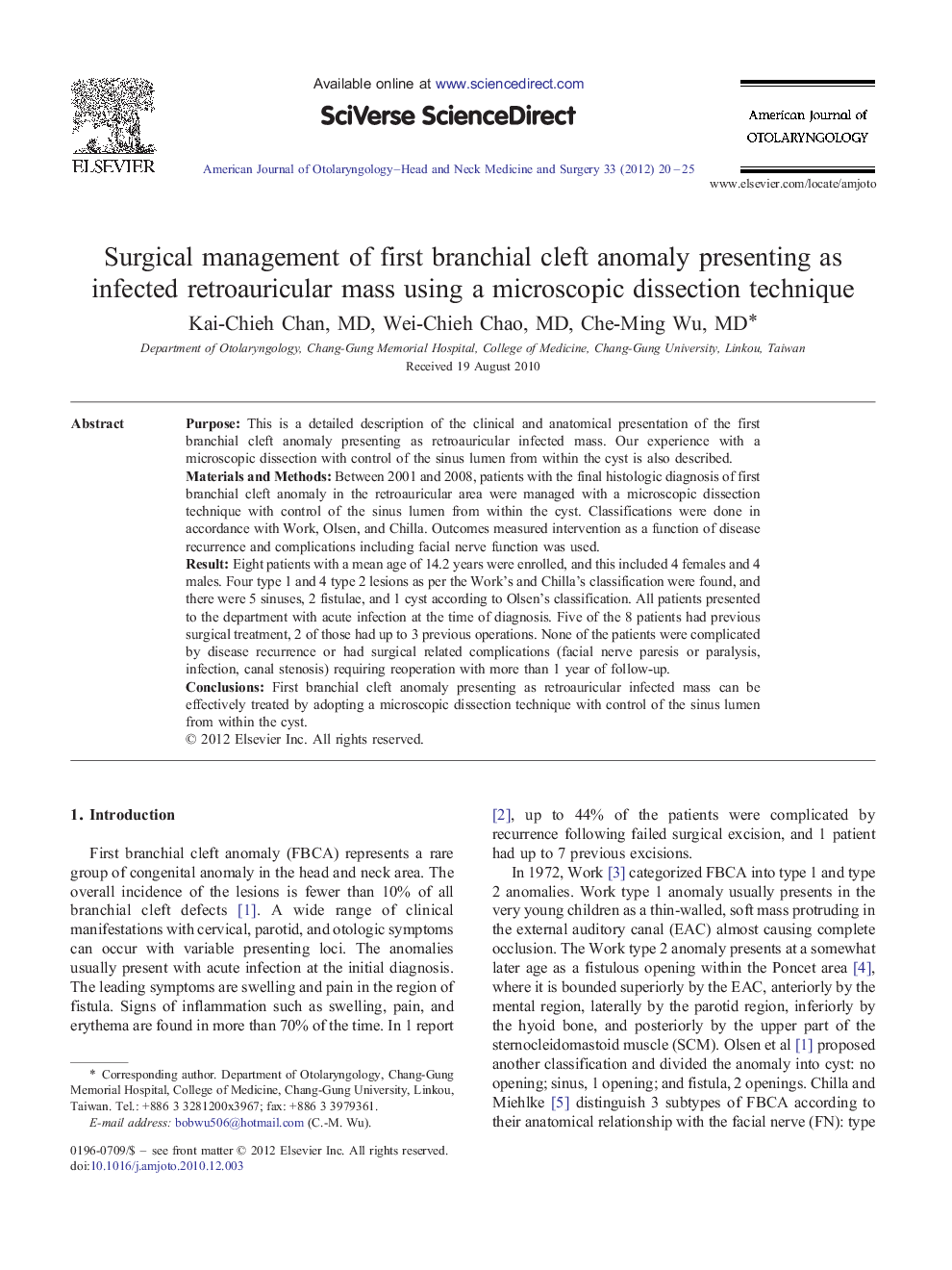| Article ID | Journal | Published Year | Pages | File Type |
|---|---|---|---|---|
| 4104009 | American Journal of Otolaryngology | 2012 | 6 Pages |
PurposeThis is a detailed description of the clinical and anatomical presentation of the first branchial cleft anomaly presenting as retroauricular infected mass. Our experience with a microscopic dissection with control of the sinus lumen from within the cyst is also described.Materials and MethodsBetween 2001 and 2008, patients with the final histologic diagnosis of first branchial cleft anomaly in the retroauricular area were managed with a microscopic dissection technique with control of the sinus lumen from within the cyst. Classifications were done in accordance with Work, Olsen, and Chilla. Outcomes measured intervention as a function of disease recurrence and complications including facial nerve function was used.ResultEight patients with a mean age of 14.2 years were enrolled, and this included 4 females and 4 males. Four type 1 and 4 type 2 lesions as per the Work's and Chilla's classification were found, and there were 5 sinuses, 2 fistulae, and 1 cyst according to Olsen's classification. All patients presented to the department with acute infection at the time of diagnosis. Five of the 8 patients had previous surgical treatment, 2 of those had up to 3 previous operations. None of the patients were complicated by disease recurrence or had surgical related complications (facial nerve paresis or paralysis, infection, canal stenosis) requiring reoperation with more than 1 year of follow-up.ConclusionsFirst branchial cleft anomaly presenting as retroauricular infected mass can be effectively treated by adopting a microscopic dissection technique with control of the sinus lumen from within the cyst.
